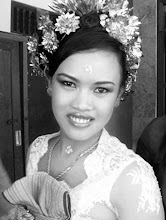Mount Agung or Gunung Agung is a mountain in Bali. This stratovolcano is the highest point on the island. It dominates the surrounding area influencing the climate. The clouds come from the west and Agung takes their water so that the west is lush and green and the east dry and barren.
Gunung Agung last erupted in 1963-64 and is still active, with a large and very deep crater which occasionally belches smoke and ash. From a distance, the mountain appears to be perfectly conical, despite the existence of the large crater.
From the peak of the mountain, it is possible to see the peak of Gunung Rinjani on the island of Lombok, although both mountains are frequently covered in cloud.
The 1963-64 Eruption
The lava flows missed, sometimes by mere yards, the Mother Temple of Besakih. The saving of the temple is regarded by the Balinese people as miraculous and a signal from the gods that they wished to demonstrate their power but not destroy the monument the Balinese faithful had erected. However, over 1,000 people were killed and a number of villages were destroyed in this eruption.
Climbing the Mountain
There are two routes up the mountain, one from Besakih which proceeds to a higher peak and starts at approximately 1100metres and another which commences higher from Pura Pasar Agung, on the southern slope of the mountain, near Selat and which is reputed to take 4 hours. There is no path between the two routes at the top. Cecilie Scott provides an account of the ascent from Pura Pasar Agung. The mountain can be seen from various directions in video, there is a well produced video of the climb from Pura Pasar Agung and a short video from the top above Besakih. Greg Slayden describes a climb from Besakih claimed to have taken a remarkable four and a half hours to the peak and Ken Taylor describes a climb that took much longer and which included getting lost.
Guides are available in Besakih and the mountain can also be climbed without a guide. The climb from Besakih is quite tough. It is sometimes tackled as a single climb generally starting about 10.00pm for a dawn arrival at the peak and sometimes with an overnight camp about three quarters of the way up. It is far harder than the more popular Balinese climb up Gunung Batur. It is not a mountain that needs ropes and not quite high enough for altitude sickness but adverse weather conditions develop quickly and warm waterproof clothing is required and should be carried. There is no water available along the route.
Proceed through the temple complex then continue on a path that travels continuously upwards on a steep narrow spur through open forest and jungle most of the way. There is little potential to get lost until the route opens up towards the top where the correct route doubles backwards. Many climbers miss this turn and continue up a small valley which can be climbed out of with some difficulty.
Sabtu, 29 September 2007
Langganan:
Posting Komentar (Atom)


Tidak ada komentar:
Posting Komentar